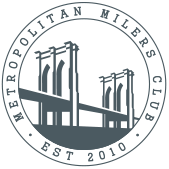A Legendary Race
From Roger Bannister’s Four-minute-mile to Jim Ryun’s Dream Mile the history books are filled with legendary tales of athletes giving their all for 1760 yards.
The Mile is also the athletics calendar’s among most storied events, from the Millrose Games’ Wanamaker Mile, to the Dream Mile in Oslo’s Bislett Stadium, to the our own Fifth Avenue Mile. These races have inspired runners for generations and continue to thrill spectators annually.
The Perfect Distance
The mile is an ideal distance in many ways—requiring both power and endurance—so it is surprising and unfortunate that there are very few opportunities to race the distance in the New York area.
Our hope is to establish a program of races and events that celebrate the mile, making it a part of runners training and racing plans.
Who would benefit from taking part?
- Road Runners – Runners of all levels of ability who have focused on road racing for an extended period can tend to get stale and lose much of their athleticism from training and racing at slower speeds. Racing an occasional mile would help them to gauge their speed and fitness and suggest areas that they need to work on. All distance runners, whether 5k specialists or marathoners, would benefit from developing the power and the proper running mechanics required to improve their mile PR.
- Middle Distance Runners in the Off-season – Unfortunately many 800m and 1500m specialists lose their speed and athleticism in the summer and fall as they increase their mileage in preparation for cross-country. While it is important to develop a fitness base, power and proper mechanics can and should be maintained. As a rule of thumb, a competitive runner should never be more than ten seconds off their best mile. If I’m a 4:10 miler at my peak, I should be able to run 4:20 any day of the year. A regular series of races would give them the opportunity to test their fitness without disrupting their training.
- Kids – Running is becoming more popular but the usual race distances of 3 to 5 miles are not manageable or healthy for most kids. Younger children shouldn’t run the volume of miles required to train for a four mile race and kids will only be bored and frustrated by running races they are not prepared to take on. A mile is a manageable distance and once they’ve established a PR, that performance will give them incentive to work to improve from one race to the next.
- Sprinters – General fitness from off-season training is key to decreasing a sprinter’s recovery time after workouts, avoiding injury, and accomplishing a larger volume of work in their specialty. Many sprinters at the high school level benefit from cross country because the races are usually only 2 to 3 miles. At the college level, where races are 5 to 6 miles long, these same sprinters tend to drop cross country completely and lose the related benefits. An occasional (perhaps once a month) bout with the mile would help them and their coaches to gauge their fitness through a fall training cycle and from one year to the next.
- Recreational Athletes – When someone plays basketball or tennis occasionally or works out in their local gym it can be difficult to assess the fitness gains being made. Running a mile for time every so often would be a great diagnostic, providing information on the person’s conditioning but also on the efficacy of their chosen sport or exercise routine.
